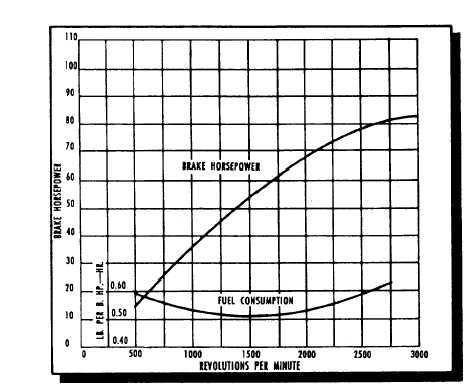DRAWBAR AND BELT HORSEPOWER
There are two kinds of horsepower commonly used by manufacturers in rating the power of construction vehicles: drawbar and belt horsepower.
DRAWBAR HORSEPOWER is the power that can be exerted in pulling a load. Specifications of the Caterpillar D-8 H series with a D-342 engine, for example, rate the drawbar horsepower at 180.
BELT HORSEPOWER is equivalent to the rated engine power except in cases where the belt pulley is driven through a gear train. In that case, there is a slight loss of power caused by gear friction. Also, while there may be some belt-pulley slippage, it is disregarded in arriving at the belt horsepower rating.
The national Automotive Chamber of Com- merce has developed a simplified method of determining taxable horsepower based on the bore of the engine and the number of cylinders. This specification is listed in most manufacturers' manuals, but it does not truly represent the actual horsepower of modern high-speed, high-compression engines. It is used for licensing purposes only in some states.
GRAPHS AND DIAGRAMS
Graphs and diagrams are abbreviated methods of recording operational and maintenance data.
Manufacturers' operational and maintenance manuals often contain graphs and diagrams. The technical bulletins, prepared chiefly for tune-up mechanics, may use a particular graph or diagram to eliminate pages of written description that otherwise would be necessary.
PERFORMANCE CURVES
Figures 3-2 and 3-3 are examples of graphs that describe engine performance in terms of brake horsepower and fuel consumption. Dynamometer tests provide the data used in plotting the performance curves for each engine.

Figure 3-2. - Performance curves of a typical six-cylinder gasoline engine.
Continue Reading